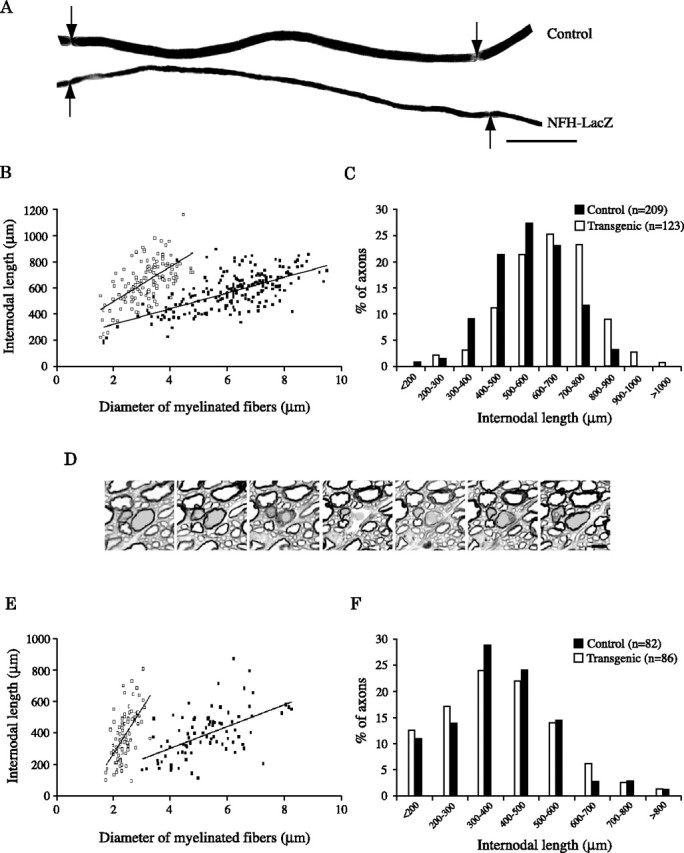Figure 3.

Despite the reduced axonal caliber, the internodal length is not affected in either the CNS and PNS from NFH-LacZ mice. A, Teased myelinated fibers of sciatic nerve from control (top) and NFH-LacZ (bottom) mice. Arrows, Nodes of Ranvier. Note that although the diameter of the transgenic fiber is reduced, the internodal length is similar to the normal fiber. B, Fiber diameter and internodal length measured in sciatic nerve of control (black squares) and NFH-LacZ (white squares) mice show a linear relationship between fiber diameter and internodal length. C, Internodal lengths are similar between control (black bars) and transgenic (white bars) sciatic nerves (561 ± 136 μm vs 637 ± 157 μm), despite a reduced axonal size in transgenic samples. D, Serial sections of spinal cord from control mice showing an axon (in blue) at the level of a node of Ranvier. E, Fiber diameter and internodal length measured in spinal cord of control (black squares) and NFH-LacZ (white squares) mice. Both types of fibers show a linear relationship between fiber diameter and internodal length. F, Internodal lengths are similar between control (black bars) and transgenic (white bars) spinal cords (393 ± 151 μm vs 387 ± 154 μm) despite the reduced size of axons in transgenic samples. Scale bars: A, 100 μm; D, 2 μm.
